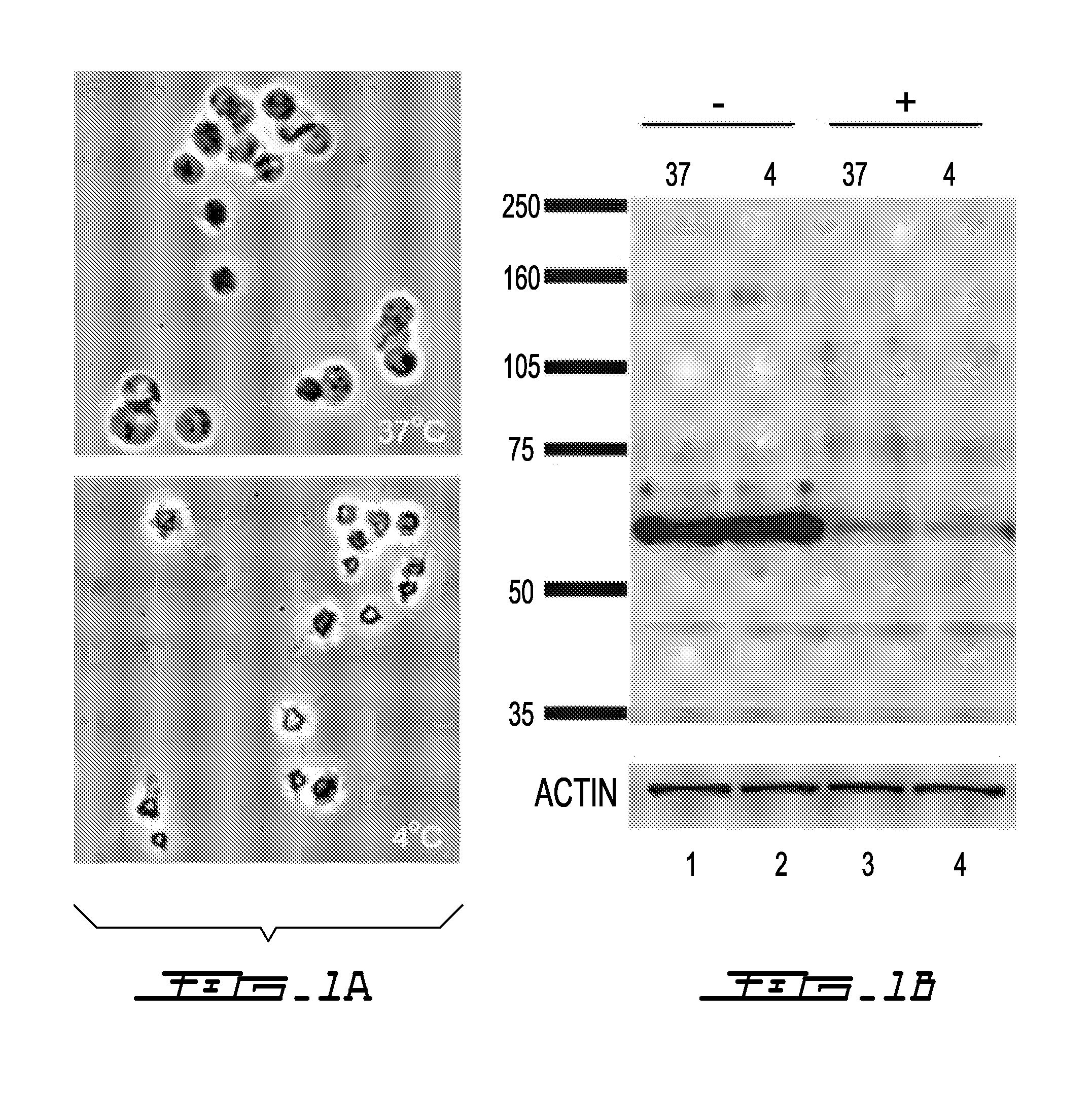Cold storage of modified platelets
- Summary
- Abstract
- Description
- Claims
- Application Information
AI Technical Summary
Benefits of technology
Problems solved by technology
Method used
Image
Examples
example 1
Determination of Cold Storage on PEGylated Platelets
[0072]Platelet modification with PEG or PEG derivatives is done by mixing a concentration of platelets with chemically activated PEG or PEG derivatives. The concentration of platelets can range from very low counts to very high counts as required by the application; for clinical purposes, a single unit of platelet rich plasma (PRP) should contain at least 5.5×1010 platelets (see AABB Technical Manual, 12th edition, 1996 American Association of Blood Banks, page 144). Activation of PEG or PEG derivatives is accomplished by chemically modifying one or both terminal reactive groups of PEG or PEG derivatives with a chemical reactive linker group of an associated linker molecule.
[0073]Multiple mixing methods can be used to achieve the desired platelet-PEG ratio. In one embodiment, whole blood is collected in ACD (acid citrate dextrose) anticoagulant. Platelet rich plasma (PRP) is prepared from the whole blood by centrifugation (150×g fo...
example ii
Effects of a Freeze / Thaw Cycle on PEGylated Platelets Platelet Enrichment and Storage
[0079]Whole blood was collected in acid citrate dextrose (ACD) and centrifuged at 150×g for 12 min at 26° C. to obtain platelet rich plasma (PRP). Platelet counts were measured with the ADVIA 120 automated hematology analyzer (Beckman Coulter).
[0080]The plasma was removed by centrifugation at 500×g for 5 min at 25° C. followed by aspiration of the supernatant and the platelet pellet was resuspended in a platelet storage solution SSP+ (Macopharma, 5 mL total volume). The resultant suspension was split into three aliquots of 1.5 mL each (Control, PEGylated and DMSO-treated samples). An equal volume of SC-mPEG5000 solution in aqueous buffer was mixed with the platelet suspension for a final concentration of 10 mM SC-mPEG5000. For DMSO-treatment the platelet suspension was mixed with 10% DMSO at a 1:1 ratio for a final concentration of 5%. All samples were manually mixed and subsequently kept gently roc...
example iii
Platelet Transfusion in Rabbits Comparing Control, PEGylated and DMSO-Treated Platelets
[0088]New Zealand white rabbits first receive gamma irradiation (Cobalt 550cG rads for 10-11 min.). Six days later, rabbits are injected with ethyl palmitate (34% solution, Fluka) and sheep anti-rabbit platelet serum to induce thrombocytopenia (e.g. a platelet count of approximately 20×109 cells / L).
[0089]Concentrated platelet suspensions are prepared from platelet concentrates drained into 50 mL conical tubes and centrifuged at 1000×g for 5 min. at 19-20° C. With a syringe, 48 mL of the supernatant is removed and the pellet is resuspended in the remaining supernatant. Eight concentrates are combined to obtain a transfusion dose per rabbit of 20×1010 platelets in 10 mL. Samples for platelet counts, microscopy and flow cytometry are prepared as described in Example I.
[0090]The rabbits are secured and anesthetized. Platelets are transfused through the ear vein. To measure the ear bleeding time, an in...
PUM
 Login to View More
Login to View More Abstract
Description
Claims
Application Information
 Login to View More
Login to View More - R&D
- Intellectual Property
- Life Sciences
- Materials
- Tech Scout
- Unparalleled Data Quality
- Higher Quality Content
- 60% Fewer Hallucinations
Browse by: Latest US Patents, China's latest patents, Technical Efficacy Thesaurus, Application Domain, Technology Topic, Popular Technical Reports.
© 2025 PatSnap. All rights reserved.Legal|Privacy policy|Modern Slavery Act Transparency Statement|Sitemap|About US| Contact US: help@patsnap.com



